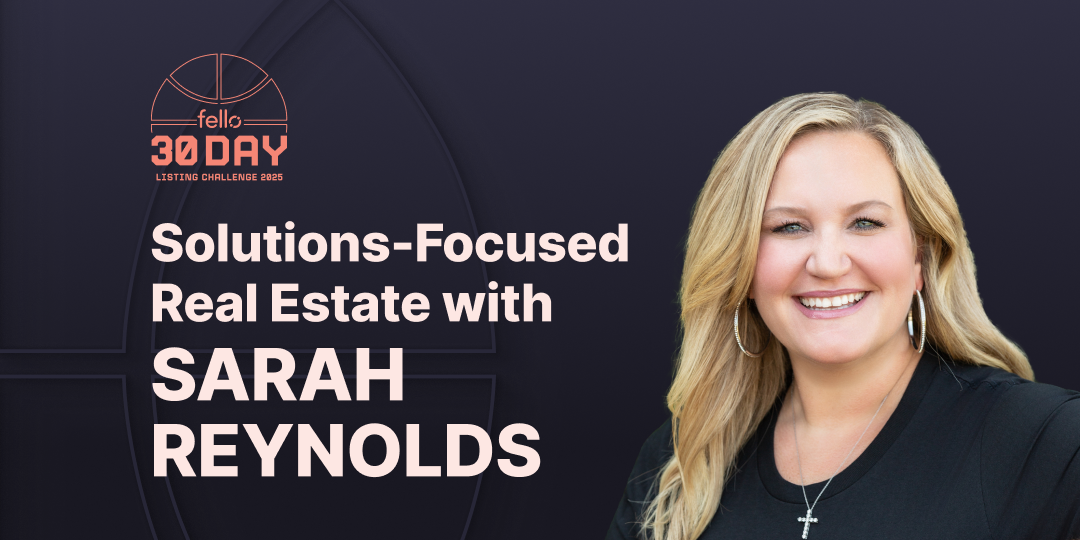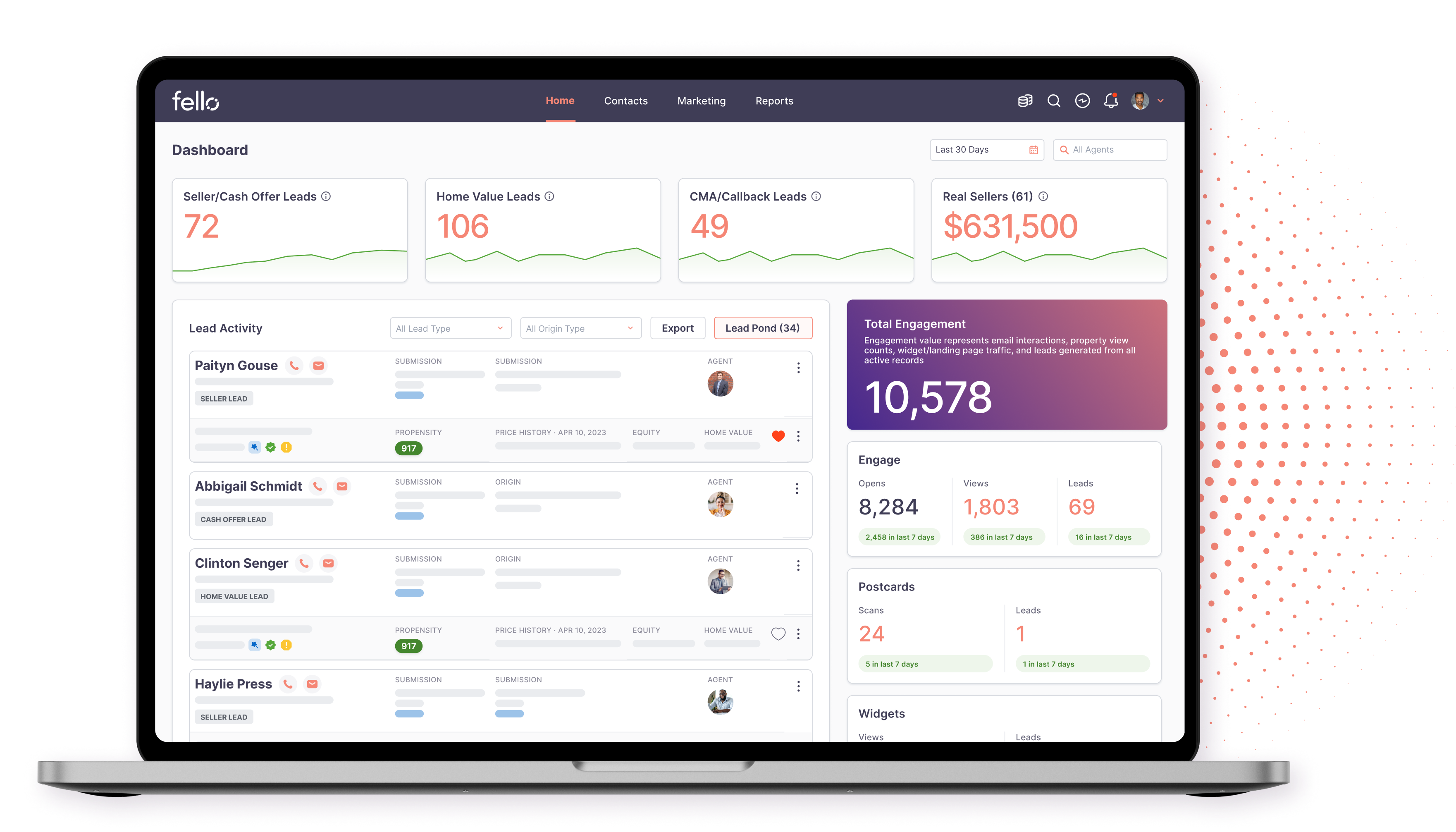Blog Post
The Power of Listening: How Sarah Reynolds Built a Listing Empire Through Solutions-Focused Real Estate

March 20, 2025 written by Jamie Muenchen, Community Leader
In a powerful session during the 30-Day Listing Challenge (30DLC), Sarah Reynolds, CEO of EmpowerHome and one of Keller Williams' top-performing mega team leaders, shared her journey from buyer's agent to listing powerhouse. With her team setting over 1,300 listing appointments in just the first 75 days of 2025 and handling business worth $800 million in listings alone, Sarah's approach offers valuable insights for agents at every level.
The foundation of her success? A simple yet profound commitment to listening to clients and creating solutions for their specific problems. Let's dive into the key takeaways from her session and the actionable steps you can implement today.
Watch Sarah Reynolds' entire session here →
From Buyer's Agent to Listing Expert: Overcoming Limiting Beliefs
Sarah's journey began as her mother's buyer's agent — a foundation she now considers invaluable. "The best listing agents know buyers because buyers are who purchase the listing," she explained. After spending 2–3 years focusing exclusively on buyers, she faced a significant mental barrier when transitioning to listings.
"I had this limiting belief that I couldn't list houses," Sarah admitted. "In my mind, listing agents had to be the most experienced, had to be number one in the market, and I didn't feel worthy as a listing agent."
Actionable steps to overcome limiting beliefs:
- Recognize what sellers actually want: They don't want the most experienced or highest-ranked agent; they want to feel like they're your #1 priority.
- Lead with listening: Position yourself as the best listener who will provide solutions to their specific problems.
- Build confidence in your problem-solving abilities: Focus on your ability to listen and create solutions rather than your years of [in]experience.
- Reframe your value proposition: Instead of competing on experience, compete on dedication to solving the seller's unique challenges.
The Art of Reflective Listening: Going Three Levels Deep
At the heart of Sarah's approach is what she calls "reflective listening" — a methodology that involves repeating what clients say and digging three levels deeper to uncover their true motivations.
"The number one thing is that the seller has to feel like they are number one to you and that you are willing to do whatever it takes to solve their problem and help them accomplish their goal," Sarah emphasized.
Actionable reflective listening framework:
-
Practice reflective listening and go three levels deep:• Repeat what they say: "So what I'm hearing is that you need to walk away with $40,000. Is that right?"
• Ask why that outcome matters: "Tell me, what will $40,000 do for you? Why $40,000?"
• Dig deeper to find the core emotional need: "Is what's most important to you feeling comfortable in terms of your move, or is it specifically netting $40,000?" - When in doubt, use this phrase: "Tell me more about that. Tell me more about why that's important to you."
- Match their needs to your specific solutions: "We've been able to help a lot of sellers just like you who are worried about their living expenses and don't want to take on additional debt. One thing we do differently is [specific solution]. Can you see how that will lead to you getting the most money and prevent you from taking on debt?"
- Facts tell, stories sell, so share stories of similar clients you've helped: "Through talking with you, you remind me so much of the Johnson family. They were around the corner and had very similar concerns... We ended up getting their house sold in two weeks with multiple offers."
Sarah highlighted that even her top agents struggle with listening deeply enough. Many stop at the surface level ("They need $40,000") without understanding the real motivation (comfort during transition, avoiding debt, peace of mind).
Learn more about asking the right questions in our session with Phil Jones →
Creating Programs Based on Seller Needs
What truly sets Sarah's approach apart is how she transforms common client problems into marketable solutions. Rather than keeping solutions private and only sharing them during appointments, she creates programs around them and markets these solutions publicly.
"What I've noticed is that most agents don't talk about the solutions publicly, they only talk about it on the appointments," Sarah explained. "Which then means you have less appointments because no one knows that you have the solution to their problems."
Actionable steps to create client-focused programs:
- Schedule monthly "white space" thinking time: Set aside 3–4 hours monthly to reflect on the common problems your sellers are experiencing.
- Ask yourself: "When their head hits the pillow at night, what's keeping them up?"
- Identify trends across client conversations: When you hear the same concern from multiple sellers, recognize it as a market trend (e.g. "interest rates are high, and mine is low").
- Create and name programs around these solutions: Examples from Sarah's team include:
• "Sell Your Home Guarantee" for move-up buyers
• "Sell with Certainty" cash offer program
• "Your Price is Our Promise" where they guarantee a certain price or pay the difference - Market these solutions publicly: Create landing pages, social content, and emails around these programs so sellers can find you based on the specific problem they're facing.
Watch Sarah Reynolds' entire session for more on creating solutions-based programs →
Tracking Real Numbers for Predictable Success
Sarah emphasized the importance of tracking accurate metrics rather than inflating numbers to feel good. "The whole reason for tracking is predictability," she explained.
Key metrics to track honestly (this is your funnel):
- Leads generated
- Conversations had
- Appointments set
- Appointments that actually happen
- Listing agreements signed
- Listings that go on market
- Properties that go under contract
- Closed sales
How to track the conversion rate at every step: Take the desired outcome, such as the number of conversations had with leads, and divide that by the total number of leads generated (from which you made the calls).
For example: 324 conversations had ÷ 806 new leads = 0.401 x 100 = 40%. So 40% of new leads converted into conversations. Also, these numbers are completely made up and not meant to represent any sort of success or baseline for you to try to achieve.
A good rule of thumb is to to track everything for a period of time, such as every week for a month, then look at your averages. This can be your baseline that you work to improve upon and to start recognizing trends in your business.
Actionable tracking tips:
- Count everything: Don't exclude appointments where "both decision-makers weren't present" or "they decided not to sell." These are real parts of your business.
- Calculate true conversion rates: These give you the ability to predict future results.
- Work backward from income goals: If you know your true numbers, you can determine exactly how many conversations you need daily to reach your goals.
- Stay accountable to real numbers: As Sarah put it, "Once you have tracked your real numbers, then you can work backwards the next year, and there is no reason why you won't hit your income goal."
Watch Leo Pareja explain how to determine your true hourly rate →
The Mission Beyond the Business
What drives Sarah beyond the numbers is a commitment to giving back. EmpowerHome operates in 10 of the most competitive markets in America with a vision to expand to 100 markets, each serving 100 families monthly. The ultimate goal: Giving back $100 million to worthy causes in their communities.
"We come alongside clients during their most critical stages of life, and we get invited to their kitchen table to help serve them," Sarah reflected. "I don't believe that we should do that without the heart of giving back to the communities that have allowed us to serve them."
Actionable community impact steps:
- Identify causes in your local community that align with your values
- Build a giving plan into your business model
- Share your mission with clients and team members
- Create a culture where success and giving are interconnected
The Future of Real Estate: Client Obsession
When asked about the future of the industry, Sarah's response was clear: "It's up to us as agents as to what our future is. We can choose to sit back and stop obsessing over our clients, which is what our industry did, which is why so many companies have taken in and they're just after our commission, they see it as a financial opportunity. If we keep the heart of our customer, if we obsess over their problem and how we can solve their problem, guys, we stay at the front lines."
Final action steps:
- Obsess over client problems rather than competing with other agents
- Continuously identify emerging client needs in your market (e.g. interest rates)
- Be solution-oriented in all of your marketing and client interactions
- Put clients first and recognize that your success is a byproduct of solving their problems
As Sarah powerfully stated, "Join me in obsessing over our buyers and sellers, and we will always win when we do that." The path to building a listing-focused business isn't about the right scripts or experience — it's about genuine care, deep listening, and creating solutions that truly solve the problems keeping your clients up at night.
Are you ready to transform your approach to listings? Start by planning your monthly "white space" thinking time to identify the common problems your clients face, and begin creating your first solution-based program today.

Ready to start driving more seller leads on autopilot?


